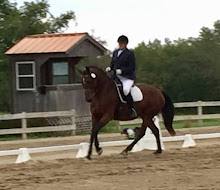There are many things that go into a successful partnership with your horse. It takes a team to make it work. There are key players required for a successful team that need to work together for a common goal.
The owner must use all of the team members and failure to do so, can cause the whole project to fail.
The trainer is an important team member and a resource for accurate information about what may be needed from the rest of the team. Each sport within the equestrian field may require slightly different things to come together for your horse to perform at the top of its ability.
In dressage, a sport horse float is almost a necessity. It is a sport where light contact for communication is required, so there needs to be total mouth comfort to allow the horse to hear without any stress. Some folks do not believe in this kind of floating and that can work for them as long as their horse was born with a fairly good mouth. When there is a problem with the mouth, then the float becomes critical.
The same thing applies to the farrier care. If your horse has good feet you have more options on hoof care. Natural trimming can work and does if the hoof structure sufficient. If the rider rides the horse hard or on hard surfaces - the horse may simply need shoes to be able to function without pain like the rider needs it to.
Saddle fitting is also a big deal. Your trainer can send you in the right direction, but ultimately having a good saddlefitter in your corner helps you ride your horse pain free.
I have seen people make teeth floating mistakes and farrier mistakes and saddle fitting mistakes. Most of them willingly make adjustments when the discomfort is pointed out. Not addressing these things is actually unkind to your horse and counter-productive to your goals.
As a trainer I try not to dwell on these things but I find sometimes I have to. Pain blocks progress like nothing else I have seen. The horse looses 1/2 of its I.Q. and is slow to learn at best and becomes dangerous to ride at worst. No trainer wants her student to not progress or worse yet get hurt. So at the point where there is a chronic pain problem that is not addressed, it is usually best to suspend the trainer - student relationship.
That being said, I love helping folks and their horses. It makes my day when they progress and do well. I love coming back from a horse show talking about what went well and what needs to be worked on to make things even better. Those are great discussions that help focus the trainer and student for future successes.
It takes a team to make your horse experience a great one. Pick your team wisely and have a great time. This is supposed to be fun and educational.
Subscribe to:
Post Comments (Atom)

No comments:
Post a Comment
Note: Only a member of this blog may post a comment.